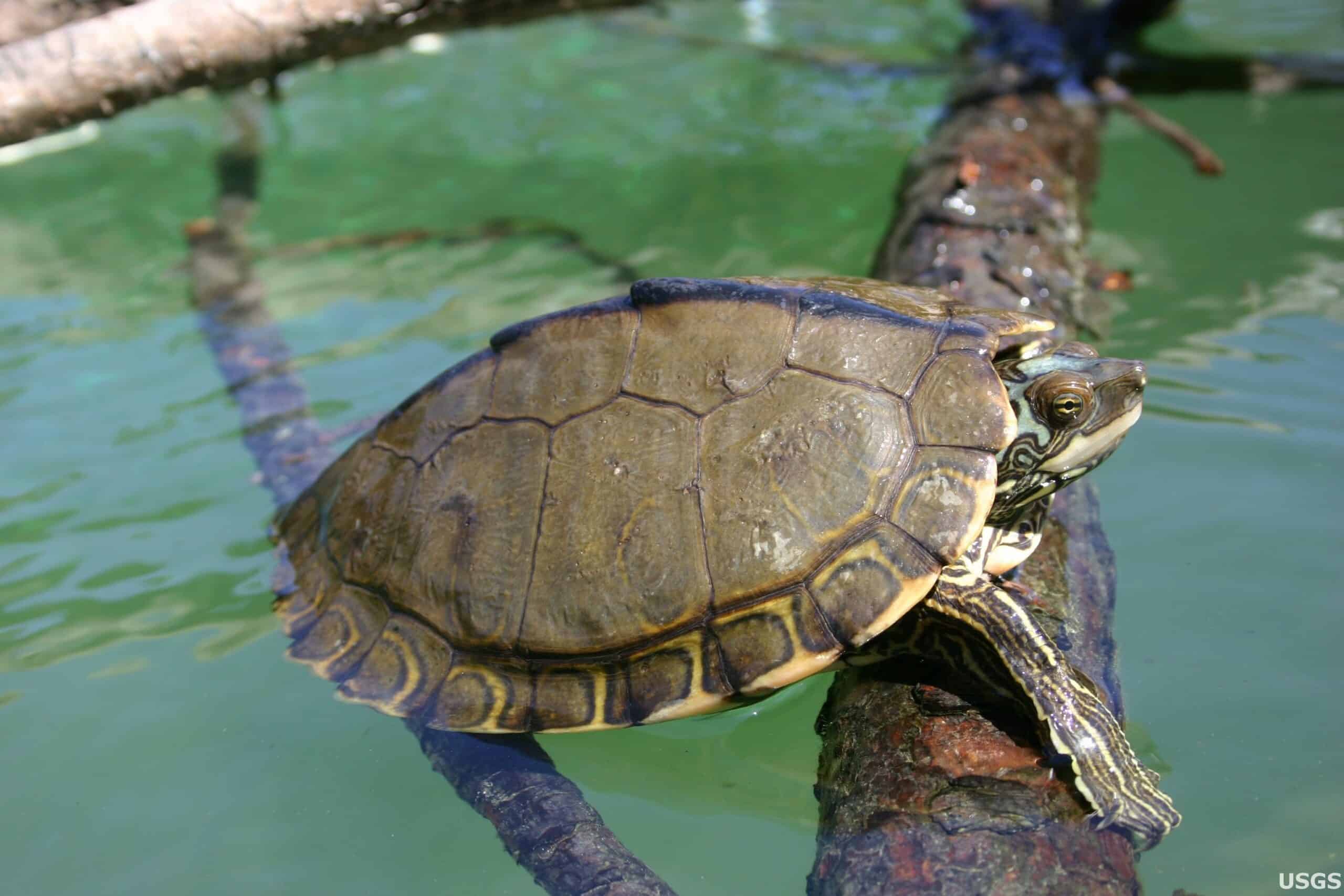Description:
Because of this turtle’s large adult size, a large space is needed for them. My first recommendation would be a Waterland turtle tub (waterlandtubs.com) kept outdoors. However, for those living in colder winter climates, an indoor enclosure would be better. This could also be a Waterland tub, as well, or opt for a roomy glass aquarium measuring about 5 feet long by 2 feet wide and tall. An enclosure this size will nicely house a pair of adult turtles. A Waterland tub also offers the option of a nesting area, however, which can be difficult to set up in an aquarium without modification. Whichever housing option you choose, the rest is basic. No substrate is needed for the enclosure. Place a couple basking sites in the aquarium that will allow the turtle to haul out and become fully dry if desired. Commercial turtle basking floats, cinderblocks, bricks—whatever works for your situation can be used. If stacking bricks, rocks, etc., be absolutely sure they can’t fall over and injure your turtle (or crack the bottom of an aquarium). Place a heat lamp over one of the haul outs to create a hot spot of about 90 degrees Fahrenheit. Leave the other haul out unheated, so your turtle(s) can choose whether they want to bask in a warm or cooler area. Place a UVB lamp over the entire enclosure. It and the heat lamp should be on a 12-hours-on, 12-hours-off cycle. Aquatic turtles such as map turtles can be messy, so a good water filtration system, often utilizing a canister filter, is a must. The type to use depends on how much water is being filtered, and how dirty the water is (which equates to how many turtles are in the enclosure). Be sure to pick a filter that will be powerful enough to handle the job, as dirty water is the number one problem when it comes to turtle’s coming down with shell rot and other conditions. Clean water is absolutely crucial to turtle health. Diet: Pearl River map turtles will eat fish—living or dead—insects, worms and commercial turtle diets work well, too. They will also eat greens and mixed vegetables. Larger specimens will even eat whole mice of appropriate size. They really like clams and other mollusks, too. What’s Available: Pearl River map turtles are becoming scarce in the wild thanks to water pollution impacting mollusk populations on which they feed. Captive breeding is thankfully increasing, but unfortunately, thanks to demand (thank the Chinese), the price of captive-bred Pearl River map turtles has gone up, and they are becoming harder to find as demand outpaces production. You can sometimes find them at reptile stores and shows, and on the Internet. Extra Info: Wild populations of the Pearl River map turtle have declined up to 98 percent since 1950, due mostly to water pollution. Ken Foose produced his first captive-bred snakes at age 11. With a Master’s Degree in zoology, he has been both a zookeeper and curator. He opened Exotic Pets, which specializes in reptiles and amphibians, in Las Vegas in 1991. He is currently president of the International Herpetological Symposium.
Habitat:
Waterways of the Pearl River and associated riversides
Range:
The Pearl River and tributaries in Mississippi and Louisiana
Scientific Name: Graptemys pearlensis
Species Group: turtle
Family: Emydidae
Size: N/A
Level: intermediate
Weight: N/A
Dangerous: No



